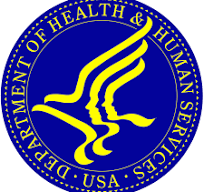Last week’s 60 Minutes segment on H5N1 focused on some shortcomings in the US agricultural sector as they grapple with H5N1 influenza infections among poultry, cattle, and some dairy workers.
The segment focused on legit gaps like poor USDA oversight, limited worker protection, and the spread of the virus through dairy herds. The veterinary experts featured in the piece rightly presented arguments about the need for better biosecurity and surveillance in the ag sector.
Bird flu poses growing risk to people as pathogen spreads, scientists warn | 60 Minutes – CBS News
But let’s be honest… H5N1 isn’t something we’re going to “contain.” It’s global. It’s in migratory birds, domestic poultry, and now cattle — not just in the U.S., but around the world. Mitigation is the only practical path forward at the farm and ranch level.
The real threat to humans is Kennedy’s rapid disassembly of our public health system. He’s intentionally unraveling our capacity to respond if (or when) H5N1 adapts for sustained human-to-human transmission and becomes more virulent.
Local and state health departments — the frontline of any pandemic response (think surveillance, antiviral distribution and vaccine delivery and administration) is being cut dramatically by Kennedy.
The U.S. has walked away from the WHO. Trust in public health institutions is at historic lows largely because of Kennedy and Trump’s behavior and decision-making.
Those who should be reinforcing evidence-based public health practice (Secretary Kennedy) are instead waging a war on science, vaccine development, and the very concept of public health.
NIH researchers who once focused on rapid vaccine development (and zoonotic spillover) are being defunded, fired and driven out. Entire teams are gone, and his plan is to cut even further into NIH’s mission next year.
If H5N1 reassorts and sparks a human pandemic, we’ll be ‘responding’ with an eviscerated system. And it won’t just be about late vaccine timelines or scarce antivirals (or public health’s ability to distribute and administer them) — it’ll be about the absence of the workforce and infrastructure to mount a response at all.
After just 4 months of this administration, we’re already in worse shape now than we were for H1N1 in 2009. What we’ve already lost and continue to lose isn’t just funding or programs, its institutional knowledge, technical capacity, and our public health and research workforce and institutions.
If things don’t change, three and a half years from now we’ll be responding to pandemics with stone knives & bearskins.








